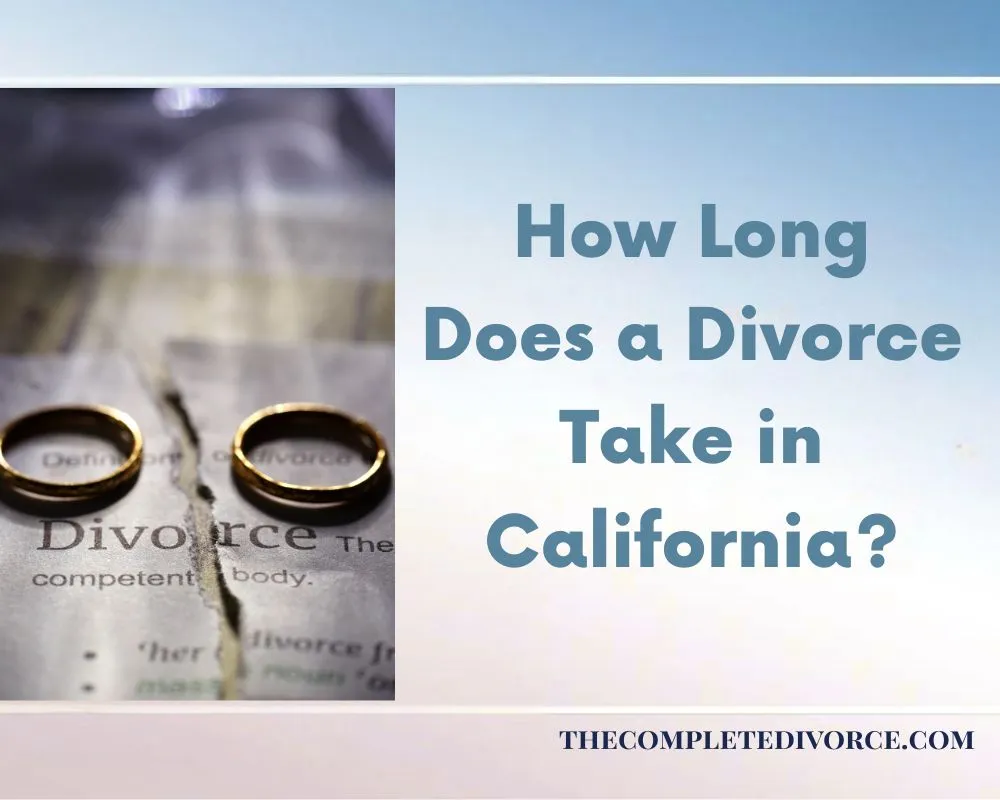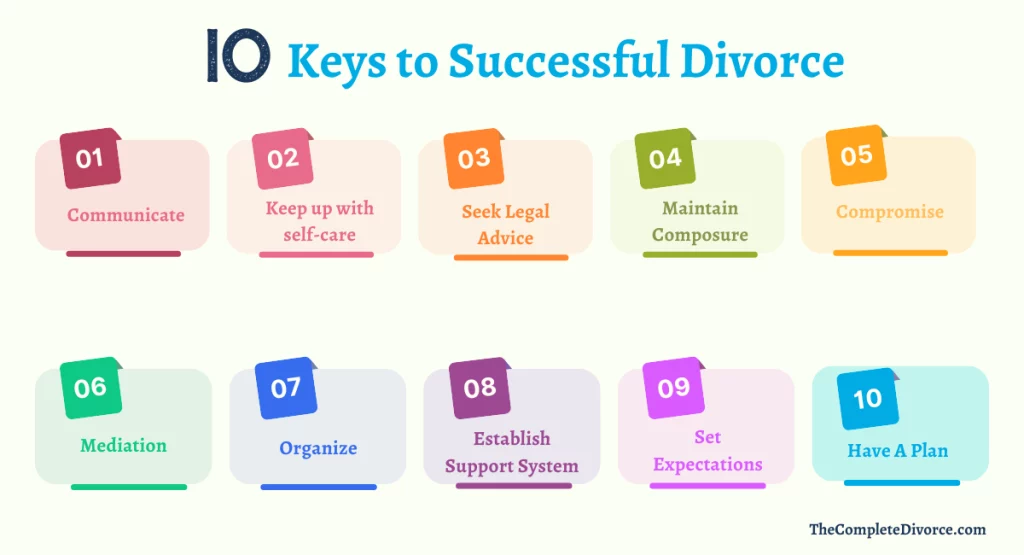
Share
How to Locate, File and Serve Divorce Papers in California

Dina Haddad
Founder & Attorney Mediator
I’m Dina Haddad, a family law attorney-mediator in California. I’m so tired of couples not having a process that’s easy to complete their divorce. They are getting lost, wasting time and money, and beyond frustrated with their results.That’s why I created TheCompleteDivorce. I took my successful mediation practice and condensed it into an affordable and winning program.
Before you start filling out Ca divorce papers of court, it’s very important that you know which forms to use, how to provide them to the court, and how to give a copy to your spouse. Getting the right forms to the court and your spouse is based on a specific process. If you wish to finish, you must follow this process carefully.
You’ll use this process at least twice in your case. The first time will be to start your divorce and then at the end, to finish. But, if you have any court hearings, you’ll also need to use this process to provide the judge with any papers for that hearing. If you do not, your papers will be rejected.
Ca Divorce Forms
The majority of the time, the court papers you need to complete and provide to the court or your spouse are premade fillable forms. This makes it so much easier to complete your divorce. Many of these forms are mandatory, so you don’t have the option to create your own. You can find the most up-to-date forms online at the California Court webpage. You can then download and fill them out electronically or by hand. You can even save your drafts until you are ready to print.
The forms are created by the Judicial Council of California, so we call them JC forms for short. There are JC forms for every kind of court case in California. The JC forms for Family Court are identified with an “FL” for family law. The FL forms are the ones we will be using. Make sure you do not use the JC forms for civil cases which are marked as “CIV.”
In addition to these “FL” forms, your county may also have mandatory forms that you must complete. These are called local county forms. Your county will have its own way of identifying the forms. In Santa Clara County, local family forms are identified as FM. In Los Angeles County, local family forms are identified as FAM. You can find the local forms on your county’s court page or ask one of the family law court clerks in your county. We have provided the links in the course as well.
Occasionally, you may also need to create your own form, usually called a pleading. You may need this to prepare your final agreement or if you have a court hearing.
Throughout the course, I will direct you to the forms you need to complete each step as well as any pleadings.

Filing
After you have completed the forms, you’ll then need to submit them to the court clerk. This is called filing. Filing is an extremely important part of your divorce and the only way to make your court forms official. If you do not properly file your documents, it is as if the documents do not exist.
Depending on what you’re filing, you may be required to pay a filing fee. You can find the fee schedule on the California Courts website, the Statewide Civil Fee Schedule under the Family Law Fees. The fees change from year to year. A check is preferable. If you use a credit card, you’ll be charged a processing fee. Make your check out to the “Court Clerk”. If you would like to apply for a waiver, complete and file the “Request to Waive Court Fees,” FW-001.
- California Court’s website: www.courts.ca.gov
- Statewide Civil Fee Schedule (Family Law begins on page 6): http://www.courts.ca.gov/documents/filingfees.pdf
- “Request to Waive Court Fees,” FW-001: www.courts.ca.gov/documents/fw001.pdf
You can file your forms in person, or by mail, and some counties allow electronic filing. For electronic filing, check with your county’s rules. When you file your forms in person or by mail, you’ll submit the original and two copies to the clerk. The original will be for the court. One copy will be for you, and the other for your spouse.
If done correctly, the clerk will stamp the original “Filed,” with the date it was filed. The original will be kept in your case file, which is a public record. The clerk will then stamp the copies you provided, usually as “Endorsed Filed;” another way of saying they are copies of the originally filed forms, and return them to you.
In Person:
If you are going to file your forms in person, you must visit the clerk’s office at your local family court. When you arrive at family court, there will be signs directing you to the clerk’s office. There might be a few different lines. Make sure you stand in the right line, the line for family law filings. When it’s your turn, you’ll provide the clerk with your forms; the original set, and two copies. The clerk will review your forms to make sure you completed them correctly. If approved, you’ll receive your copies back as an endorsed copy, and pay any filing fee required.
By mail:
If you file by mail, you’ll need two envelopes. You’ll need an envelope to mail your original forms with your two copies to the court clerk, and you’ll need the other envelope for the clerk to mail your two copies back to you.
Label the first envelope with the mailing address for the family court in your county and put your address for the return. Next, prepare the return envelope. This time, put your address as the recipient, and the court’s mailing address for the return. You can use any kind of envelope. Manila envelopes or a flat-rate priority envelopes work nicely. Put enough postage for all three copies to come back in case there is a mistake. If you do not provide a self-addressed stamped envelope or one with enough postage, the Clerk will not mail copies back to you.
Place all three copies, the check for any filing fees, and the return envelope into the envelope addressed to the family court’s mailing address. Put enough postage and mail it. If done correctly, when filed, the Clerk will return the endorsed filed copies to you in the self-addressed stamped envelope you provided. If not done correctly, the entire package will be returned to you unfiled typically with a notice of what was done incorrectly.
Serving
After you have filed your forms, you’ll need to provide them to your spouse. Just as there is an official way to provide your forms to the court, there is an official way to give them to your spouse. This is called service. There are three ways to serve your filed forms; by personal service, using mail service, or by publication.
Personal service means you have someone hand deliver the filed forms to your spouse. Personal service is usually used for the initial divorce papers. For mail service, you have someone mail the documents directly to your spouse on your behalf. This is typical of all other forms. If you cannot locate your spouse, there is another method called service by publication. The judge can permit you to publish in a newspaper that your spouse is mostly likely to see.
Proof of Filing (Proof of Service)
Anytime you give filed copies to your spouse for the first time, you must complete and file a proof of service form. A proof of service is the official way of saying you gave a copy of the filed documents to your spouse. If you do not file a proof of service for the documents you gave your spouse, it is as if you never served your spouse.
Fortunately, the proof of service forms are fillable JC forms, identified with an FL. But there is more than one FL proof of service form. The one you use depends on how you had your spouse served and what forms you served your spouse.
Once you fill out the proof of service, you file it with the court clerk. Filing the proof of service works the same way as filing other forms. You can file either in person, by mail, or when permitted, electronically.
Just remember, for any of your court forms to have any meaning, you must properly serve your spouse the filed documents and prove this to the court by filing the right proof of service form.
It’s very important to understand which forms to use, how to file them properly and serve them correctly on your spouse. If done incorrectly, your forms will be rejected. You’ll have to fix your mistakes and either wait in line again to file or wait for the mailing to be returned to you. Not only frustrating, but costs more of your time.
At TheCompleteDivorce, we provide you with what you need to successfully do your California divorce on your own. We provide all the required family law court forms in our automated forms program, all the video tutorials, and an automated customizable Marital Settlement Agreement (Divorce Agreement). If you need more help, you can get our package which includes time with a divorce mediator.
Before you go, consider if we can help you. We have helped thousands of couples in California. Our guided DIY divorce is successful and cheap! Our services are all 5-star!






